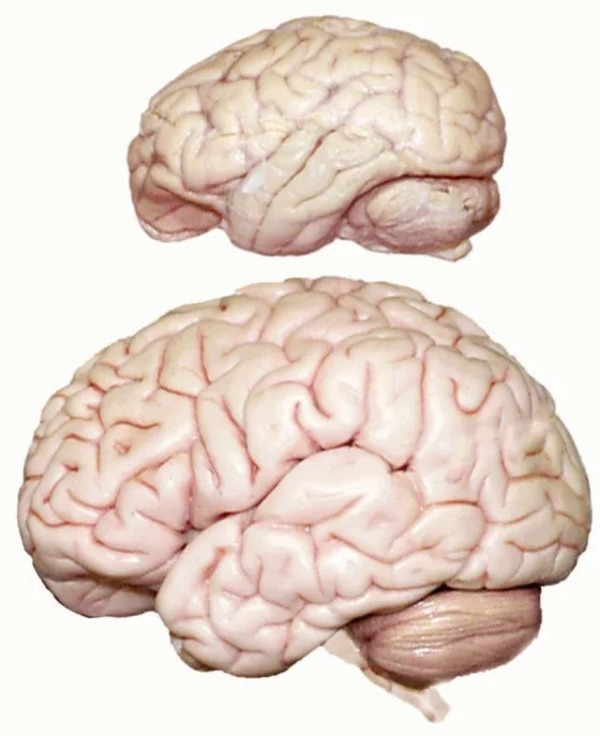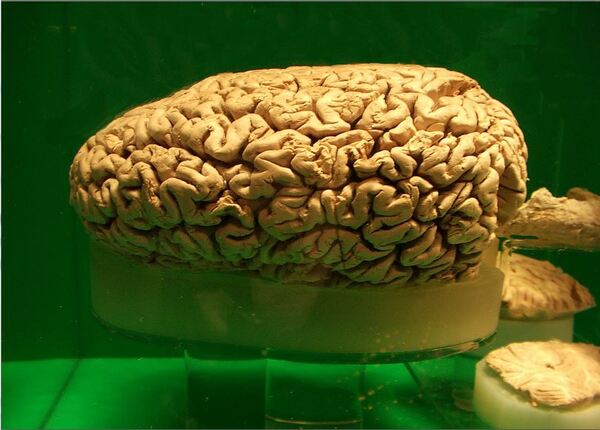When it comes to brains, the animal kingdom is full of surprises. While humans often think of themselves as the most "brainy," we don’t hold the record for the heaviest brain—that title goes to the sperm whale, whose brain weighs an astonishing 17 pounds (7.8 kilograms)! But is a bigger brain always better? Let’s explore which animals have the heaviest brains, why they’re so big, and what this means for intelligence and survival.
The sperm whale takes the crown with the heaviest brain on Earth.
How Heavy Is It? The sperm whale’s brain weighs about 17 pounds (7.8 kilograms)—the size of a large watermelon.
Why So Big? Sperm whales need big brains for their complex lives in the deep ocean. They use echolocation to navigate in darkness, communicate with intricate clicking sounds, and process vast amounts of sensory data.
What’s the Brain-to-Body Ratio? Despite its huge brain, the sperm whale’s brain is relatively small compared to its body. Its brain accounts for only 0.02% of its body weight, making it less efficient than smaller animals like humans or dolphins.

Let’s look at other contenders for the title of “biggest brain”:
Elephants are known for their remarkable memory and emotional intelligence.
How Heavy Is It? An elephant’s brain weighs about 11 pounds (5 kilograms), making it the heaviest brain among land animals.
What’s Special About It? Elephants’ large brains allow them to form deep social bonds, recognize other elephants even after decades apart, and even mourn their dead.
The blue whale, the largest animal on Earth, also has a big brain.
How Heavy Is It? About 12.5 pounds (5.6 kilograms)—not as heavy as the sperm whale’s, but still impressive.
Brain vs. Body: Even with its large brain, the blue whale’s size means its brain-to-body ratio is tiny, at around 0.007%.
dolphins.html">Dolphins are famous for their intelligence and playful behavior.
How Heavy Is It? Bottlenose dolphins have brains that weigh 3.5 pounds (1.6 kilograms).
What’s Special About It? Their high brain-to-body ratio (1:70) and complex social lives make them one of the smartest animals in the ocean.
Humans may not have the heaviest brain, but we have something special.
How Heavy Is It? About 3 pounds (1.3 kilograms).
Why Are We So Smart? It’s not just the size but the structure—our brains have an exceptionally large cerebral cortex, which helps us think, plan, and solve problems in ways no other species can.

It’s tempting to think that bigger brains mean smarter animals, but the truth is more complicated.
Humans: Our ratio is 1:50, the highest among all animals. This means our brains are large compared to our body size, contributing to our advanced intelligence.
Dolphins: Dolphins also have a high ratio, making them highly intelligent. They’ve been observed using tools, solving problems, and even recognizing themselves in mirrors—a sign of self-awareness.
Whales and Elephants: These animals have large brains, but their brain-to-body ratios are lower. However, their intelligence is evident in their behaviors, like teamwork, communication, and emotional depth.
Some animals, like birds and insects, have small brains but show surprising intelligence.
Crows and Ravens: Known for tool use and problem-solving, these birds have dense neurons that pack a punch despite their small brain size.
Octopuses: With a decentralized nervous system, most of their neurons are in their arms, yet they solve puzzles and navigate mazes with ease.
Sperm whales rely on their massive brains for survival in deep ocean environments.
Echolocation: Their brains work closely with their "melon" (a fatty organ in their head) to emit and interpret sonar signals. This helps them navigate and hunt in the pitch-black depths of the ocean.
Communication: Sperm whales produce distinct clicking sounds, forming “codas” that are thought to act like a language, helping them identify and communicate with their pods.
Emotion and Memory: Elephants have an extraordinary ability to remember waterholes and migration routes, even after decades. Their brains also process emotions, allowing them to display behaviors like empathy and grief.
Social Intelligence: Elephants live in matriarchal societies and work together to protect their young and defend against predators.
Playful Problem-Solvers: Dolphins use their brains to play, learn tricks, and interact with humans. They’ve been seen “teaching” other dolphins new behaviors.
Cortex Development: Their large neocortex allows them to process emotions, understand complex social hierarchies, and even “talk” to each other using clicks and whistles.

Brains evolved to meet the specific challenges animals face in their environments.
Marine Mammals: Whales and dolphins need large brains to process sensory information in vast, dark oceans and communicate over long distances.
Land Mammals: Elephants and primates rely on their brains to navigate complex social structures and adapt to changing environments.
Birds: Despite their small size, birds like parrots evolved dense neurons to solve problems and thrive in varied habitats.
Fact: While big brains help with certain tasks, intelligence depends more on brain structure and neuron density than sheer size.
Fact: Humans don’t have the heaviest brains, but our brains are uniquely efficient and structured for advanced thinking.
Fact: Brain size varies depending on ecological needs. Some species evolve smaller brains to conserve energy while maintaining necessary cognitive functions.
Octopuses: Their arms are essentially thinking tools, with each arm capable of independent action.
Sea Sponges: They have no brains but survive by filtering water for nutrients.
Crows: They recognize human faces and can remember kindness or threats for years.
Understanding animal brains helps us:
Discover Evolutionary Patterns: Learn how brains evolved to solve environmental challenges.
Improve Conservation Efforts: Protect intelligent species like whales and dolphins by understanding their needs and behaviors.
Advance Neuroscience: Studying brains across species can inspire medical advancements and deepen our understanding of the human brain.
The animal kingdom offers a rich tapestry of brain sizes, structures, and functions. From the mighty sperm whale with its 17-pound brain to the crafty crow with its compact yet powerful brain, each species showcases the incredible adaptability of nature.
Understanding these differences not only highlights the diversity of life on Earth but also underscores the shared connections between all living creatures. Whether it’s the emotional depth of elephants, the playful intelligence of dolphins, or the sheer power of the whale’s brain, every species has something to teach us about survival, communication, and the beauty of evolution.
animal tags: sperm-whale-takes
We created this article in conjunction with AI technology, then made sure it was fact-checked and edited by a Animals Top editor.